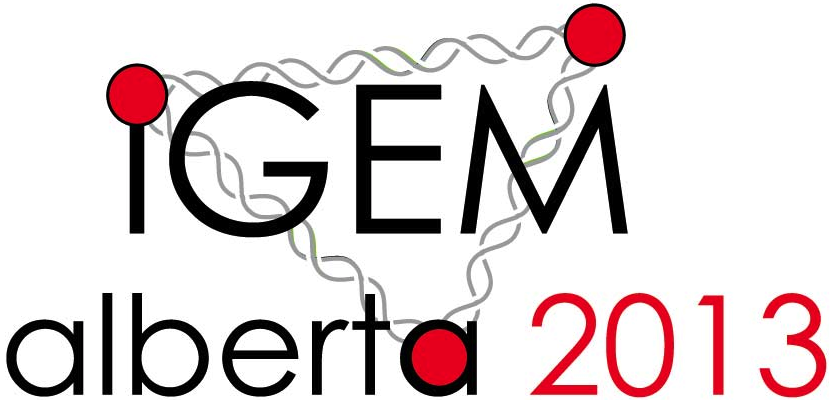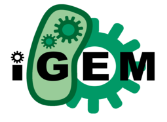Team:Alberta/Protocols
From 2013.igem.org
| (14 intermediate revisions not shown) | |||
| Line 19: | Line 19: | ||
height:37px; | height:37px; | ||
margin-top:-17px; | margin-top:-17px; | ||
| - | margin-left:- | + | margin-left:-95px; |
} | } | ||
} | } | ||
| Line 55: | Line 55: | ||
} | } | ||
.sidebar { | .sidebar { | ||
| - | position:fixed; | + | position: fixed; |
| - | top: | + | top: 157px; |
| - | float:left; | + | float: left; |
| - | z-index:3; | + | z-index: 3; |
| - | padding: | + | padding: 10px 10px 10px 10px; |
| + | width: 230px; | ||
| + | } | ||
| + | .sidebar_block { | ||
| + | background-color:white; | ||
| + | margin:1px; | ||
| + | border:1px grey solid; | ||
| + | padding:5px 10px 5px 10px; | ||
| + | border-radius:5px; | ||
| + | box-shadow: 0px 0px 20px #444444; | ||
} | } | ||
.main { | .main { | ||
| Line 374: | Line 383: | ||
box-shadow: 0px 0px 30px #000; | box-shadow: 0px 0px 30px #000; | ||
| + | } | ||
| + | a.anchor{ | ||
| + | display: block; | ||
| + | position: relative; | ||
| + | top: -180px; | ||
| + | visibility: hidden; | ||
} | } | ||
</style> | </style> | ||
| Line 380: | Line 395: | ||
<div class="titlebar"> | <div class="titlebar"> | ||
<br> | <br> | ||
| - | + | <img src="/wiki/images/4/41/Ab_mapmen_title.png" width="600" height="95"></img><img src="/wiki/images/a/a5/2013-igem-logo.png" width="198" height="95"></img> | |
| - | + | ||
| - | + | ||
| - | + | ||
| - | + | ||
</div> | </div> | ||
<div class="bin"> | <div class="bin"> | ||
| Line 403: | Line 414: | ||
<li><a href="/Team:Alberta/Team">Roster</a></li> | <li><a href="/Team:Alberta/Team">Roster</a></li> | ||
<li><a href="https://igem.org/Team.cgi?year=2013&team_name=Alberta">Official Profile</a></li> | <li><a href="https://igem.org/Team.cgi?year=2013&team_name=Alberta">Official Profile</a></li> | ||
| - | <li><a href="/Team:Alberta/ | + | <li><a href="/Team:Alberta/Sponsors">Sponsors</a></li> |
| + | <li><a href="/Team:Alberta/Attributions">Attributions</a></li> | ||
</ul> | </ul> | ||
</li> | </li> | ||
| Line 422: | Line 434: | ||
</ul> | </ul> | ||
<div class="sidebar"> | <div class="sidebar"> | ||
| - | <div | + | <div class="sidebar_block"> |
| - | < | + | <h5>Places</h5> |
| - | < | + | <a href="#Top"><p>Top</p></a> |
| - | < | + | <a href="#Parts"><p>The Parts</p></a> |
| - | + | <a href="#Build"><p>Building the Plasmids</p></a> | |
| - | </ | + | <h5>Project Sections</h5> |
| - | </ | + | <a href="/Team:Alberta/Background"><p>Background</p></a> |
| - | + | <a href="/Team:Alberta/Overview"><p>Overview</p></a> | |
| + | <a href="/Team:Alberta/Results"><p>Results</p></a> | ||
| + | <a href="/Team:Alberta/Protocols" class="active"><p>Protocols</p></a> | ||
| + | <a href="/Team:Alberta/Parts"><p>Submitted Parts</p></a> | ||
| + | <a href="/Team:Alberta/Accomplishments"><p>Accomplishments</p></a> | ||
</div> | </div> | ||
</div> | </div> | ||
<div class="main"> | <div class="main"> | ||
| + | <a class="anchor" id="Top"></a> | ||
<div class="block"> | <div class="block"> | ||
<p class="content-title">Protocols</p> | <p class="content-title">Protocols</p> | ||
</div> | </div> | ||
| + | <a class="anchor" id="Parts"></a> | ||
| + | <div class="block"> | ||
| + | <h2>The Parts</h2> | ||
| + | <p>The 6 genes that were required to assemble various routes were obtained by PCR from plasmids kindly provided by Genomikon Inc. Each gene (AmpR, KanR, ClrR, GFP, RFP and aCP) exist as self contained cassettes that are flanked by BsaI sites. Parts were then generated according to the schematic shown below:</p> | ||
| + | <img src="/wiki/images/c/c5/Making_parts_678x586.png" align="middle" style="width:100%;"> | ||
| + | </div> | ||
| + | <a class="anchor" id="Build"></a> | ||
<div class="block"> | <div class="block"> | ||
| - | <p> | + | <h2>Building the Plasmids</h2> |
| - | + | <p>Our plasmid assembly system relies upon the achievements of previous Team Alberta iGEM entries, 2009’s BioBytes and 2010’s Genomikon assembly methods. This process begins with origins of replication anchored at one end to magnetic beads in a suspension within a reaction microfuge tube. The anchored strands have a single, free-floating sticky end, onto which successive genes are ligated. Once the new gene has been ligated on, we use a magnet to hold the beads (along with the anchored DNA) inside the reaction tube, while washing away the rest of the reaction, including the enzyme, buffers, and any non-ligated DNA that remains. The beads are then resuspended in a new reaction mixture, containing the next ligation step.</p> | |
| - | + | <img src="/wiki/images/b/b4/2013Alberta-Poster2.jpg" align="middle" style="width:100%;"> | |
| - | + | <p>Once all of the genes have been ligated, a tail-piece that complements the original bead-anchor DNA sequence is added, so that the finished product can be unbound from the beads and will close upon itself to form the circular plasmid. In this fashion, a four-gene, roughly 5000-base-pair plasmid is assembled in as little as an afternoon, cheaply and easily.</p> | |
| - | + | ||
| - | + | ||
| - | + | ||
| - | + | ||
| - | + | ||
| - | + | ||
| - | + | ||
| - | + | ||
</div> | </div> | ||
</div> | </div> | ||
Latest revision as of 03:46, 29 October 2013
Protocols
The Parts
The 6 genes that were required to assemble various routes were obtained by PCR from plasmids kindly provided by Genomikon Inc. Each gene (AmpR, KanR, ClrR, GFP, RFP and aCP) exist as self contained cassettes that are flanked by BsaI sites. Parts were then generated according to the schematic shown below:

Building the Plasmids
Our plasmid assembly system relies upon the achievements of previous Team Alberta iGEM entries, 2009’s BioBytes and 2010’s Genomikon assembly methods. This process begins with origins of replication anchored at one end to magnetic beads in a suspension within a reaction microfuge tube. The anchored strands have a single, free-floating sticky end, onto which successive genes are ligated. Once the new gene has been ligated on, we use a magnet to hold the beads (along with the anchored DNA) inside the reaction tube, while washing away the rest of the reaction, including the enzyme, buffers, and any non-ligated DNA that remains. The beads are then resuspended in a new reaction mixture, containing the next ligation step.

Once all of the genes have been ligated, a tail-piece that complements the original bead-anchor DNA sequence is added, so that the finished product can be unbound from the beads and will close upon itself to form the circular plasmid. In this fashion, a four-gene, roughly 5000-base-pair plasmid is assembled in as little as an afternoon, cheaply and easily.
 "
"


